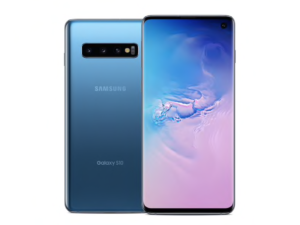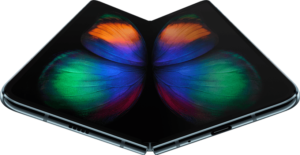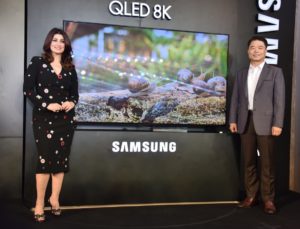Samsung S10 Review
Highlights
- In-display fingerprint sensor
- Triple lens camera set up
- Corning gorilla glass 6
- Wireless Power-share
- 6.4 inches Dynamic AMOLED display
Introduction
Samsung S10 is one of the most anticipated phones of 2019. Samsung Galaxy S10 offers a brand new look to its flagship, catching everyone’s attention, especially the dual punch holes on the display itself. This is Samsung’s way of mimicking a notch-less display experience for the consumer. With the Galaxy S10, Samsung has made a big and bold design statement as it offers the best screen estate you can expect.
Price
The price of Galaxy s10 starts from ₹ 61,900 for the 128 GB base model and ₹ 76,900 for the 512 GB model.
Design
Samsung Galaxy S10 is light, thin, and looks simply gorgeous in the half dozens of display that Samsung offers (Prism Black, Prism Blue, Prism White, Flamingo Pink, Prism Green and Canary Yellow). This revamped design is perhaps its most noticeable change which sets it apart from Samsung Galaxy S9. The chassis is now surrounded by an iPhone X like silver tinted trim. Moreover, the one of a kind punch-hole display also blends seamlessly well with the display which also helped in increasing the screen to body ratio to a whopping 93.1%.
Display
Samsung Galaxy S10 sports a 6.1 inch Dynamic AMOLED QHD display which according to Samsung supports HDR 10+ content. In theory, this provides greater dynamic contrast and more inky-looking black levels. Therefore you can expect an effectively perfect contrast making this to be one of Samsung’s best-ever display.
Camera
This phone features a triple-lens camera setup i.e 12 MP wide-angle lens, 12 MP telephoto lens and finally 16 MP ultra-wide camera lens. Also, props to its neural processing unit, which allows the camera to identify the object in the frame, be it a chair, dog or even a plant and adjusts the camera setting accordingly for the best image possible. Furthermore, on the front, it uses a 10 MP single camera
Features
This time the fingerprint reader is also embedded under the screen to make it more convenient for the users. This technology is based upon the ultrasonic sensor that is placed beneath the display which senses fingerprint more securely than the commonly used optical sensor. Overall, the fingerprint scanner is more convenient built right into the screen but isn’t as fast as traditional capacitive sensors. Apart from that, the wireless power-sharing option that has been introduced by Samsung is also pretty a handy feature. This allows the Galaxy device to work as a wireless power-bank for other smartphones capable of wireless charging. Talking about its UI, the Galaxy S10 runs Samsung’s new One UI version of Android 9 Pie which is a big upgrade over previous Samsung’s software. S10 is also equipped with stereo speakers and features haptic vibrations a mimic of Apple’s Taptic Engine used in the iPhones. Overall the performance is good, the camera’s good and the software is the start of a rethink of how we use big phones. The ultrasonic fingerprint scanner works well enough too and there’s even a headphone socket. If you’re looking for a great phone that has all the latest sci-fi features, there aren’t many better options than the Galaxy S10.
Key Specifications –
- Screen – 6.4-inch Dynamic AMOLED capacitive touchscreen
- Processor – Qualcomm SDM855 Snapdragon 855
- Memory – 6GB/8GB/12GB
- Rear camera – 48 MP + 16 MP ultra-wide sensor + 8 MP telephoto sensor
- Battery – 4100 mAh battery
- Charging – Fast wireless charging 15W
- Software – One UI , Android 9.0 (Pie)
- Internal storage – 1 TB, 12 GB RAM, 128/512 GB, 8 GB RAM
- Biometric security – In Display Fingerprint sensor


